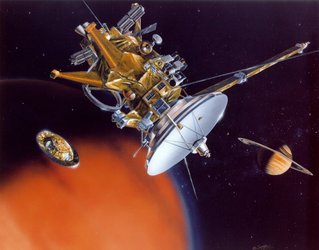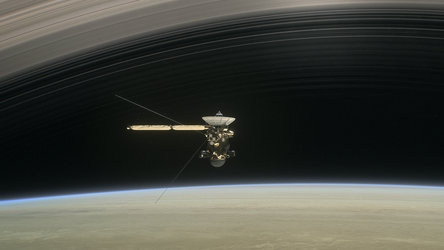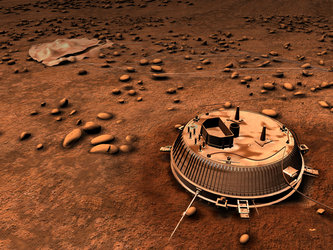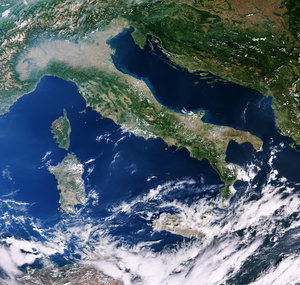International collaboration
Cassini-Huygens was an international collaboration between three space agencies: NASA, ESA and the Italian space agency, Agenzia Spaziale Italiana (ASI). Seventeen nations contributed to building the spacecraft.
The Cassini orbiter was built and managed by NASA's Jet Propulsion Laboratory. The Huygens probe was built by ESA. ASI provided Cassini's high-gain communication antenna. More than 250 scientists worldwide will study the data collected.
The development of the Cassini-Huygens mission, a complex and ambitious venture originally between NASA and ESA, required substantial scientific, technical and programme planning effort over several years.
In the late 1970s, NASA studied several scenarios for a mission to Saturn as the next step after the Galileo orbiter and probe mission to Jupiter in the detailed exploration of the giant planets.
The Cassini mission was originally proposed in November 1982 by a team of European and American scientists as a collaborative initiative with NASA in response to a regular call for mission ideas by ESA.
Very early in the study phase, the Titan probe was identified as ESA’s potential contribution to the international Cassini mission. It was within the technical capabilities of the European space industry, which had some experience in planetary missions, mainly acquired with the Giotto mission of 1985. The Titan probe was named Huygens in honour of the Dutch scientist who discovered Titan in 1655.
On the Huygens probe itself there were six instruments, each developed by different international teams. The organisations involved include the Université de Paris VII, Observatoire de Paris-Meudon, and the CNRS Service d'Aéronomie, both of France, University of Arizona, USA, Universität Bonn, Germany, and the Open University, UK.
These were supported by contributions from ESA, NASA and other organisations in Italy, Austria, Germany, Spain, France, the United Kingdom, Norway, Finland and the United States.















 Germany
Germany
 Austria
Austria
 Belgium
Belgium
 Denmark
Denmark
 Spain
Spain
 Estonia
Estonia
 Finland
Finland
 France
France
 Greece
Greece
 Hungary
Hungary
 Ireland
Ireland
 Italy
Italy
 Luxembourg
Luxembourg
 Norway
Norway
 The Netherlands
The Netherlands
 Poland
Poland
 Portugal
Portugal
 Czechia
Czechia
 Romania
Romania
 United Kingdom
United Kingdom
 Slovenia
Slovenia
 Sweden
Sweden
 Switzerland
Switzerland































